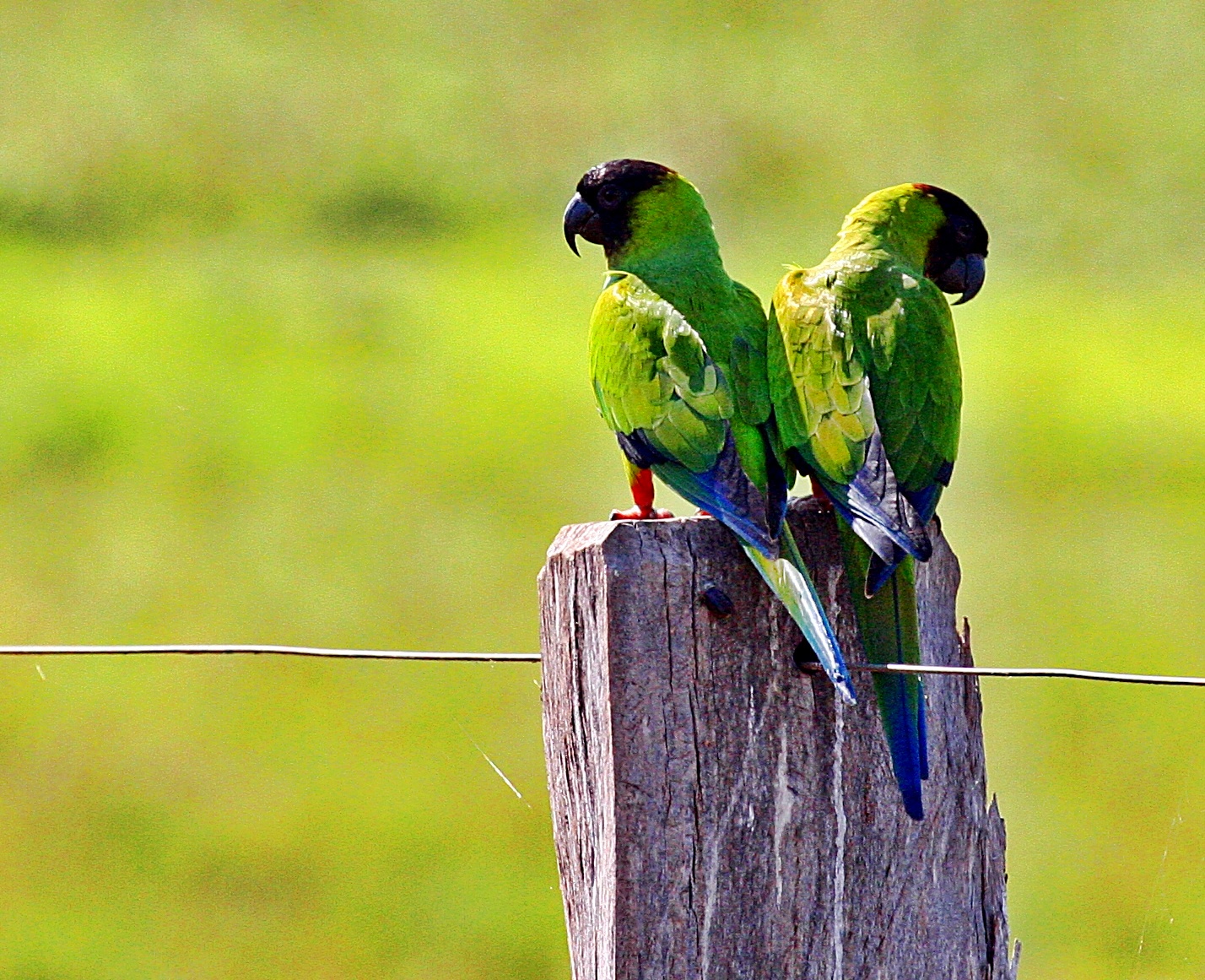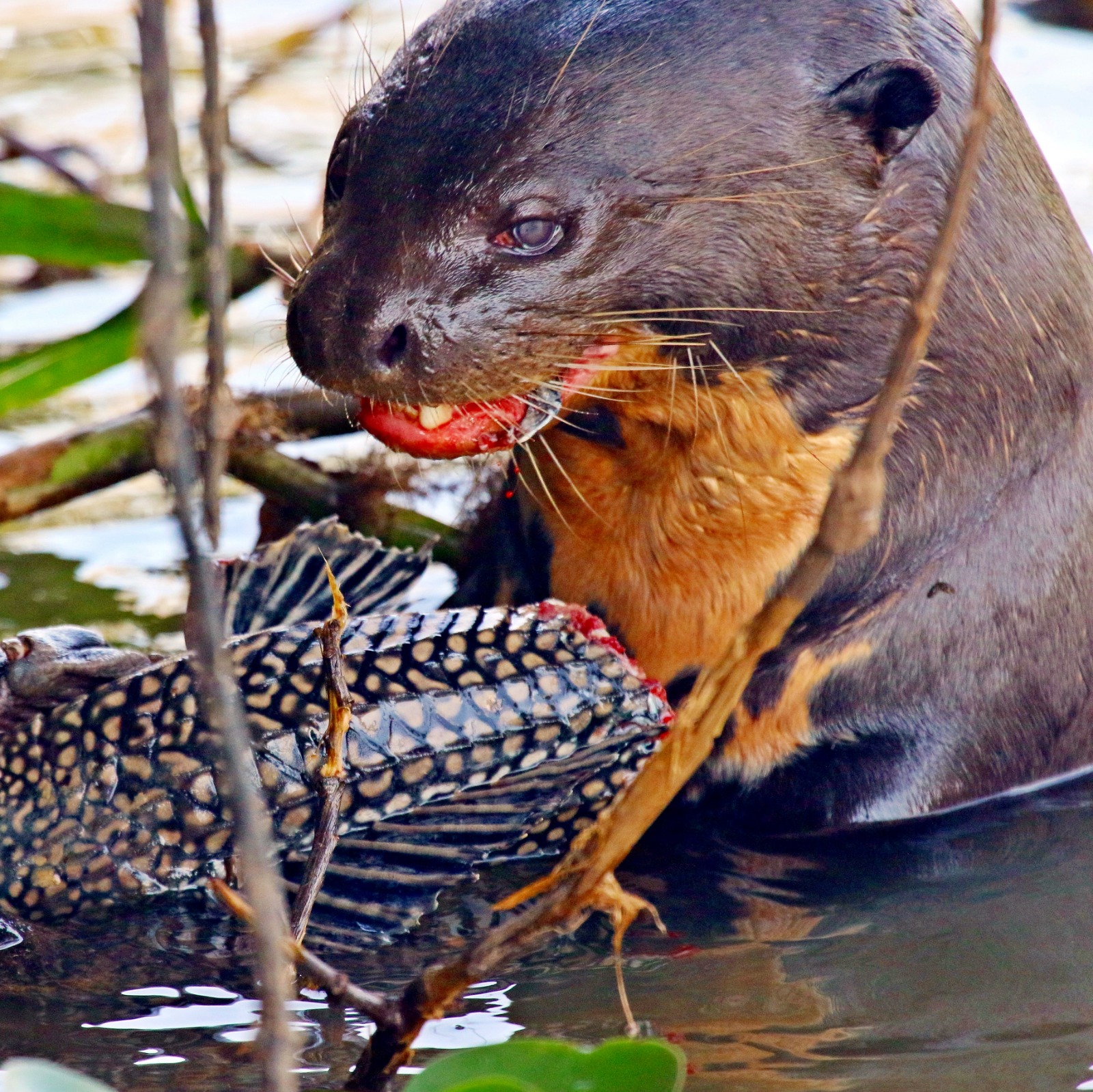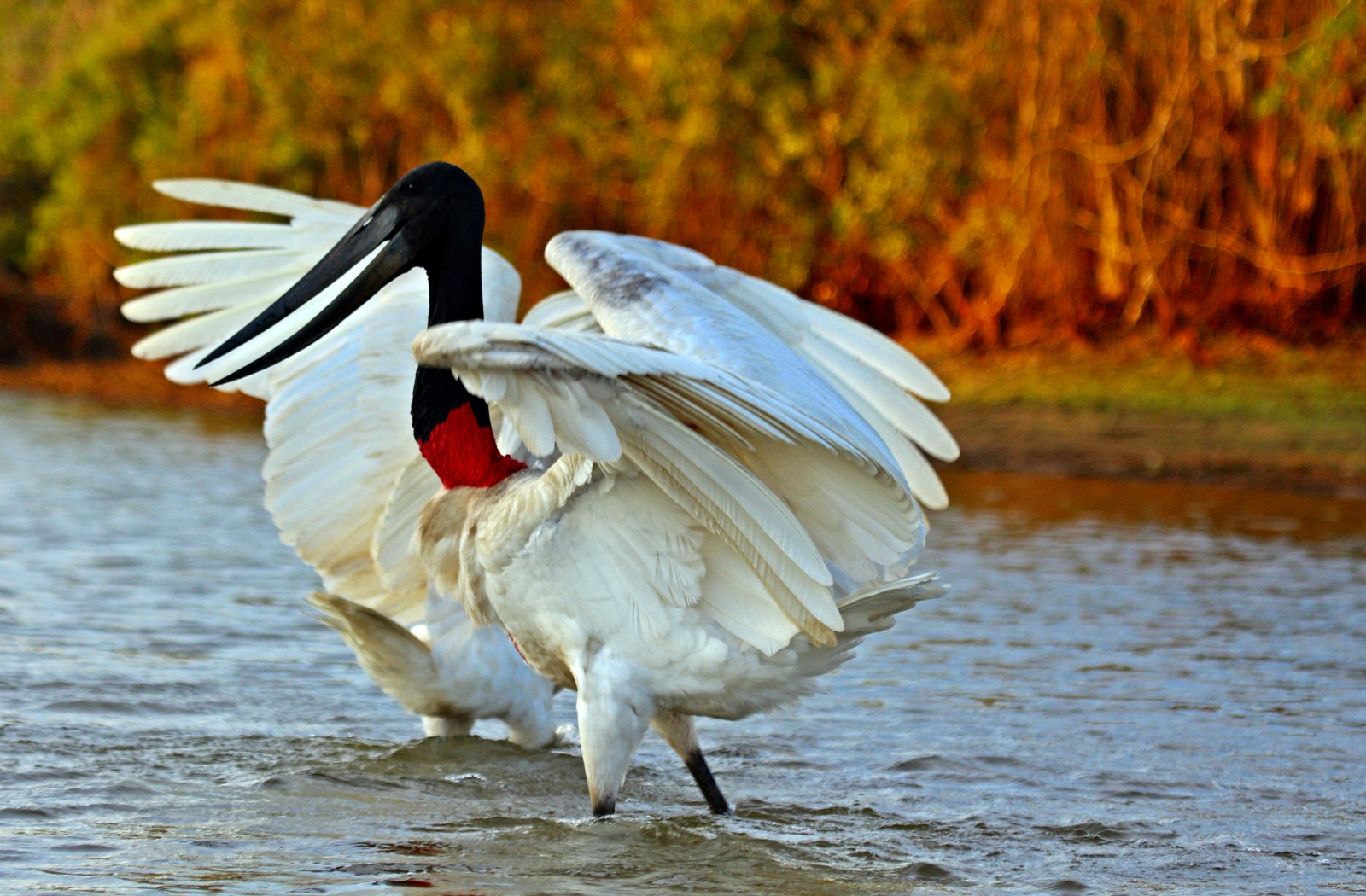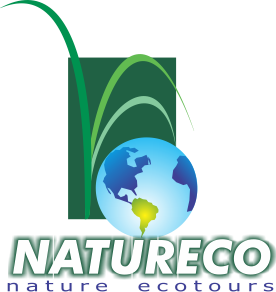Pantanal Dynamic High-Low
Wildlife Tours
custom tours
03-04-06 days
Governed by cycles of rain, the Pantanal fauna is present either in search or taking refuge from the water. So, to provide a broader view of this Dynamic Pantanal visited all year long along the Transpantaneira park-road, our tours are flexible according to the season and concentration of wildlife. It depends on your desire how long we stay on each of the places. Due to the short distances, the optional Savannah is offered to relax, interact with nature or understand the geological formation of the Pantanal
A minimum of 2 nights at the Low or 1 more night at the High Pantanal is reccomendable to have a wide view of the region.
Arrive to the CGB Cuiabá airport or meet at the hotel with our guide who will take you on a 1.5hr trip to the town of Poconé, where our journey begins with a true safari drive for 10, 36, 42 or 65 km on a dirt road with many bridges until a large region of flooding fields, along the valley of the Bento Gomes River (Dynamic Low) or until the dense forest region (Dynamic High), on the banks of the Claro or Pixaim river. Just the access to the lodges are already a true overland safari through varied environments where there are the habitat of the rich local wildlife among aquatic (Egrets, Storks, Cormorants) and forests (Toucans, Macaws) birds as well as many Capybaras and Caiman lying down after an active night. Accommodation at the Piuval, Pouso Alegre, Rio Claro or Mato Grosso lodges – comfortable accommodation which, originally, were a cattle-ranch – some more than others, but all of them maintained some traditional character. With the exception of Pouso Alegre, all accommodations offer a swimming pool for a rest, but you could chose to take a walk on one of the many trails in the surrounding of the lodge for you to experience first contact with nature and a gorgeous sunset on the Wetlands.
In the morning, we take another boat ride to a different direction, changing the environments and enrich the variety of wildlife seeing on this only water resource in a 35 km of diameter. Lunch and departure to an overland safari our other destination, changing the environment abruptly (gallery forest vs. flooding fields). Arrival in time to enjoy a brief walking or an overland- night safari.
An early morning rise to feel nature awaken We leave the lodge for a silent walk to a place with many termite hills – our best chance to see the incredible giant-anteater and many birds in chorus greeting the day. Return for breakfast, having the rest of the morning for an Overland safari (in the dry season) or (in the wet season), horse ride –the most versatile way to explore places that aren’t reached neither by feet, nor by a vehicle. Animals are so used to them that they don’t perceive the rider on its top, which makes a very good way to approach wildlife. This sightseeing includes a walk on some mound-hill for making it easier to photograph the Haycinth Macaws and many other birds that nest there, together with other mammals, such as primates, rodents and carnivores. After lunch and a brief siesta, departure on a journey of few (4 at Piuval or 18 at Pouso Alegre on the Dynamic Low or 0 if at the Dynamic High) to (in the wet season) do a boat ride along the lake or river, with possibility of seeing many aquatic birds such as the resident Jabiru storks or the migratory Spoonbills.In the dry season, we do Overland safari to a remote lake where a walking on the forest ando on a wooden walk-side take us troughout flooded fields and forests with a great view from the top of a canopy tower with a nice view of the floodplain. Caimans, Capybaras and, with luck, some Tapirs or Giant-river Otters can be seen on this tour. Return at dusk, having the car equipped with flashlights for observing the nocturnal fauna that includes Foxes, Raccoons, Deer and, with luck, some Ocelots or Jaguars.
In the morning there are some walks through the many mound-hills (portion of non-flooded land that congregate large number of mammals among many birds’ nests (LOW) or at the gallery forests (HIG). Lunch and transfer to the Chapada Tableland. Having left the Pantanal wetland, where the altitude is about 120 m of sea level, is climbed 700 m in only 200 km for observing a gorgeous sunset into a large panorama that includes the water spring of three very important rivers that form the Pantanal. Then, on to the pleasant town of Chapada dos Guimarães for dinner and overnight.
Brief visits to the National Park, with bath in one waterfall and visit to the largest one – Véu de Noiva with it 86 m entering a majestic canyon. Transfer to the village of Bom Jardim, at 150 km away passing by beautiful rock formations, by the river Manso, with its hydroelectric plant and lake and by the large Cuiabá river near to its beginning. Lunch and departure to do snorkeling in a water spring, so clear and with a blue color together with the colorful fishes; then, on the Salobra river, in an extension of 400m, where is observed rich aquatic fauna & flora. Visit to the Macaws’ lake, a water spring surrounded by many palm trees where they roost since the sunset.
Departure to do Snorkeling in a water spring, so clear that its blue is broken just with the colorful fishes; then, on the Salobra river, in an extension of 400m, where is observed rich aquatic fauna & flora. Lunch and immediate transfer for Cuiabá (hotel or airport) with drop-off at convenient time.

Arrive to the CGB Cuiabá airport or meet at the hotel with our guide who will take you on a 1.5hr trip to the town of Poconé, where our journey begins with a true safari drive for 10, 36, 42 or 65 km on a dirt road with many bridges until a large region of flooding fields, along the valley of the Bento Gomes River (Dynamic Low) or until the dense forest region (Dynamic High), on the banks of the Claro or Pixaim river. Just the access to the lodges are already a true overland safari through varied environments where there are the habitat of the rich local wildlife among aquatic (Egrets, Storks, Cormorants) and forests (Toucans, Macaws) birds as well as many Capybaras and Caiman lying down after an active night. Accommodation at the Piuval, Pouso Alegre, Rio Claro or Mato Grosso lodges – comfortable accommodation which, originally, were a cattle-ranch – some more than others, but all of them maintained some traditional character. With the exception of Pouso Alegre, all accommodations offer a swimming pool for a rest, but you could chose to take a walk on one of the many trails in the surrounding of the lodge for you to experience first contact with nature and a gorgeous sunset on the Wetlands.
Our day starts with the dawn being broken by the chorus of birds announcing the new day. You would be ready for a great experience of feeling nature on its awakening. A silent walk to a place in the Low Pantanal with many termite hills are our best chance to see the incredible Giant-Anteater or the beautiful Red-legged Seriema. If we are at the High Pantanal, our silent activity would be on kayak rides along the river in a majestous scenario, with the water of the river reflecting the first lights of the day. Returning for breakfast, we have the rest of the morning for doing an Overland safari (in the dry season) or, in the wet season, a horse ride – the most versatile way to explore places that aren’t reached neither by feet, nor by a vehicle. Horses are, for the other animals, part of the environment, so, they don’t perceive the rider on its top, which makes a very good way to approach to the wildlife. Interspersed with this, we have the chance to jump down the horses for stretching the legs and do a walk on some mound-hill. This way, we could photograph the Hyacinth Macaws and the Jabiru storks. The mound-hills are the preferred habitat for many mammals, such as primates, rodents and carnivores. If you prefer not to try the horse riding, we could do a walking through dense forests with the possibility of seeing many birds like the excellent singer Troupial or the rare Red-bill Scythebill as well as many other woodpeckers and wood creepers. A group of Peccaries or a Deer could be seen on this walking. After lunch and a brief siesta, departure on a journey of few (4km at Piuval or 18km at Pouso Alegre on the Dynamic Low or no more than 20m if at the Dynamic High) to do a boat ride along the lake or river, with possibility of seeing many aquatic birds such as the migratory Spoonbills and Cocoi or the resident Tiger heron. Visit a canopy tower (or a platform) with a nice view of the floodplain Caimans, Capybaras, Deer. With luck, some Tapirs or Giant-river Otters could be seen on this tour. If at Dynamic Low we return at the dusk, having the car equipped with flashlights for observing the nocturnal fauna that includes Foxes, Raccoons, and, with luck, some Jaguars. If at the Dynamic High, the night safari is done after dinner.
After breakfast, if at the Dynamic Low, departure for a mound-hill (‘island of vegetation’, not flooded) where we begin walking through fields and forests with possibility of seeing many birds like the elegant Curassow, or the unique Sunbittern (an Amazonian bird that comes only until the North Pantanal). If at the Dynamic High, we take another boat ride to a different direction, changing the environment and enriching the variety of wildlife seeing. Lunch and departure to an overland safari to our other destination, switching the environment (flooding fields vs. gallery forest, or the reverse). Arrival in time to enjoy a brief walk or an overland- night safari, with possibility of seeing nocturnal animals, that include the Potoo, Rabbits, Deer and Ocelots…
After breakfast, if at the Dynamic Low, we do our last walking on the trails around the non-flooded areas for giving a last chance for wonderful nature and wildlife photography. If at the Dynamic High, we take another boat ride to a different direction, changing the environment and enriching the variety of wildlife seeing on this only water resource in a 35 km of diameter. Lunch and departure to Cuiabá, with drop-off at the airport or hotel at the convenient time.

Arrive to the CGB Cuiabá airport or meet at the hotel with our guide who will take you on a 1.5hr trip to the town of Poconé, where our journey begins with a true safari drive for 10, 36, 42 or 65 km on a dirt road with many bridges until a large region of flooding fields, along the valley of the Bento Gomes River (Dynamic Low) or until the dense forest region (Dynamic High), on the banks of the Claro or Pixaim river. Just the access to the lodges are already a true overland safari through varied environments where there are the habitat of the rich local wildlife among aquatic (Egrets, Storks, Cormorants) and forests (Toucans, Macaws) birds as well as many Capybaras and Caiman lying down after an active night. Accommodation at the Piuval, Pouso Alegre, Rio Claro or Mato Grosso lodges – comfortable accommodation which, originally, were a cattle-ranch – some more than others, but all of them maintained some traditional character. With the exception of Pouso Alegre, all accommodations offer a swimming pool for a rest, but you could chose to take a walk on one of the many trails in the surrounding of the lodge for you to experience first contact with nature and a gorgeous sunset on the Wetlands.
An early morning rise before dawn to feel nature awaken. We leave the lodge for our activity, which would be – in the Low Pantanal – a silent walk to a place with many termite hills – our best chance to see the incredible Giant-Anteater and many birds in chorus greeting the day. Return for breakfast, having the rest of the morning for doing an Overland safari (in the dry season) or, in the wet season, a horse ride – the most versatile way to explore places that aren’t reached neither by feet, nor by a vehicle. Animals are so used to them that they don’t perceive the rider on its top, which makes it a very good way to approach to the wildlife. This sightseeing includes a walk on some mound-hill making it easier to photograph the Haycinth Macaws and many other birds that nest there, together with other mammals, such as primates, rodents and carnivores. If we are on the High Pantanal, this activity would be a quiet kayak journey on the Claro or Pixaim river, where silence is broken by the chorus of birds. After breakfast, we will walk through dense forests with the possibility of seeing many birds like the excellent singer Troupial or the rare Red-bill Scythebill as well as many other woodpeckers and wood creepers. A group of Peccaries or a Deer could be seen on this walk. After lunch and a brief siesta, departure on a journey for few (4km at Piuval or 18km at Pouso Alegre on the Dynamic Low or just 20m if at the Dynamic High) to (in the wet season) do a boat ride along the lake or river, with possibility of seeing many aquatic birds such as the resident Jabiru storks or the migratory Spoonbills. In the dry season, we do Overland safari to a remote lake where a walking on the forest and on an wooden walk-side take us troughout flooded fields and forests with a great view from the top of Visit a canopy tower (or a platform) with a nice view of the floodplain. Caimans, Capybaras and, with luck, some Tapirs or Giant-river Otters can be seen on this tour. If at Dyamic Low, we return at the dusk, having the car equipped with flashlights for observing the nocturnal fauna that includes Foxes, Raccoons, Deer and, with luck, some Ocelots or Jaguars. If at the Dynamic High, the night safari is done after dinner.
After breakfast, if at the Dynamic Low, departure for a mound-hill (‘island of vegetation’, not flooded) where we begin walking through fields and forests with possibility of seeing many birds like the elegant Curassow and Seriemas, or the unique Sunbittern. Many birds nest there together with mammals. If at the Dynamic High, we take another boat ride to a different direction, changing the environment and enriching the variety of wildlife seeing on this only water resource in a 35 km of diameter. Lunch and departure to Cuiabá, with drop-off at the airport or hotel at the convenient time.

DYNAMIC LOW
Especially beautiful at the Wet season (Dec-May), the large open fields often covered by water becomes a mirror of the sky and presents a large concentration of aquatic flora. Fishes abandon the rivers and are all living on the fields, which are the best place for their reproduction and food supply. Few non-flooded ‘islands of vegetation’ are the shelter for a large number of mammals (primates, rodents, carnivores and the rare Giant Anteater) that coexist with the many birds’ (Jabiru storks, Hiacyinth Macaws) nests.
DYNAMIC HIGH
On the peak of the Dry Season (Jun-Nov), rivers are the only food supply for a large variety of wildlife – including migratory birds from all over the Planet – and our favorite place to see a lot of aquatic birds (storks, cormorants and herons – with luck, we see the Agami or Boat-billed) as well as reptiles (Caimans, Iguanas) and mammals (Capybaras, Tapirs, Giant-river Otters). The dense gallery forests are home to a large variety of birds, including the Red-bill Scythebill and the best place to see Deer, Peccaries and, with luck, Ocelots.
